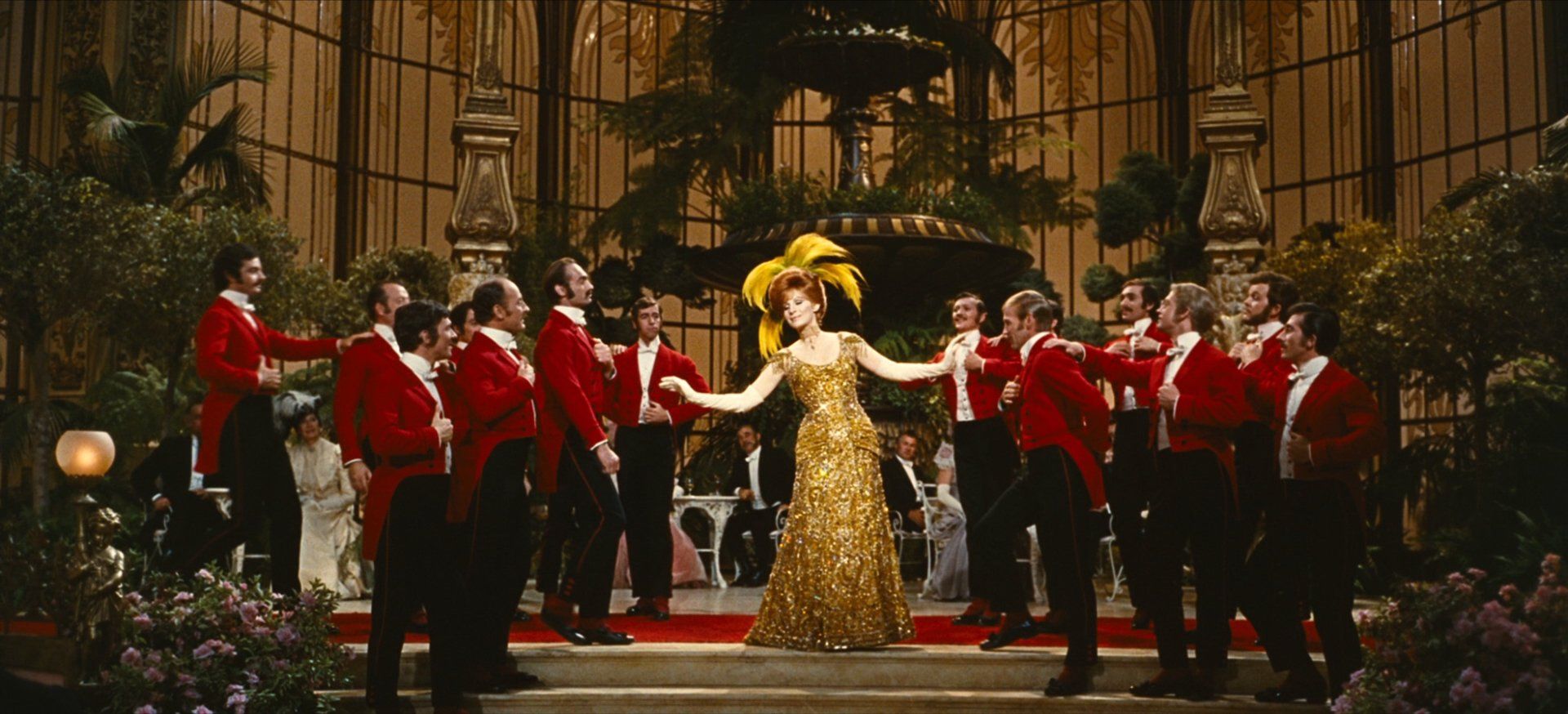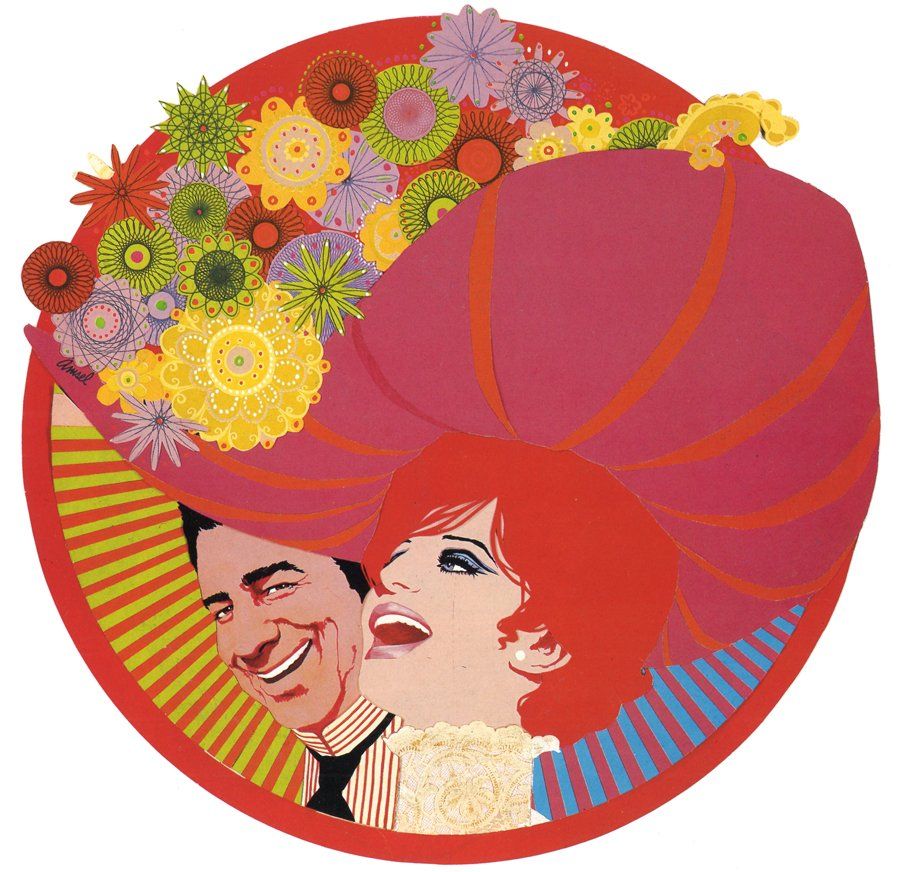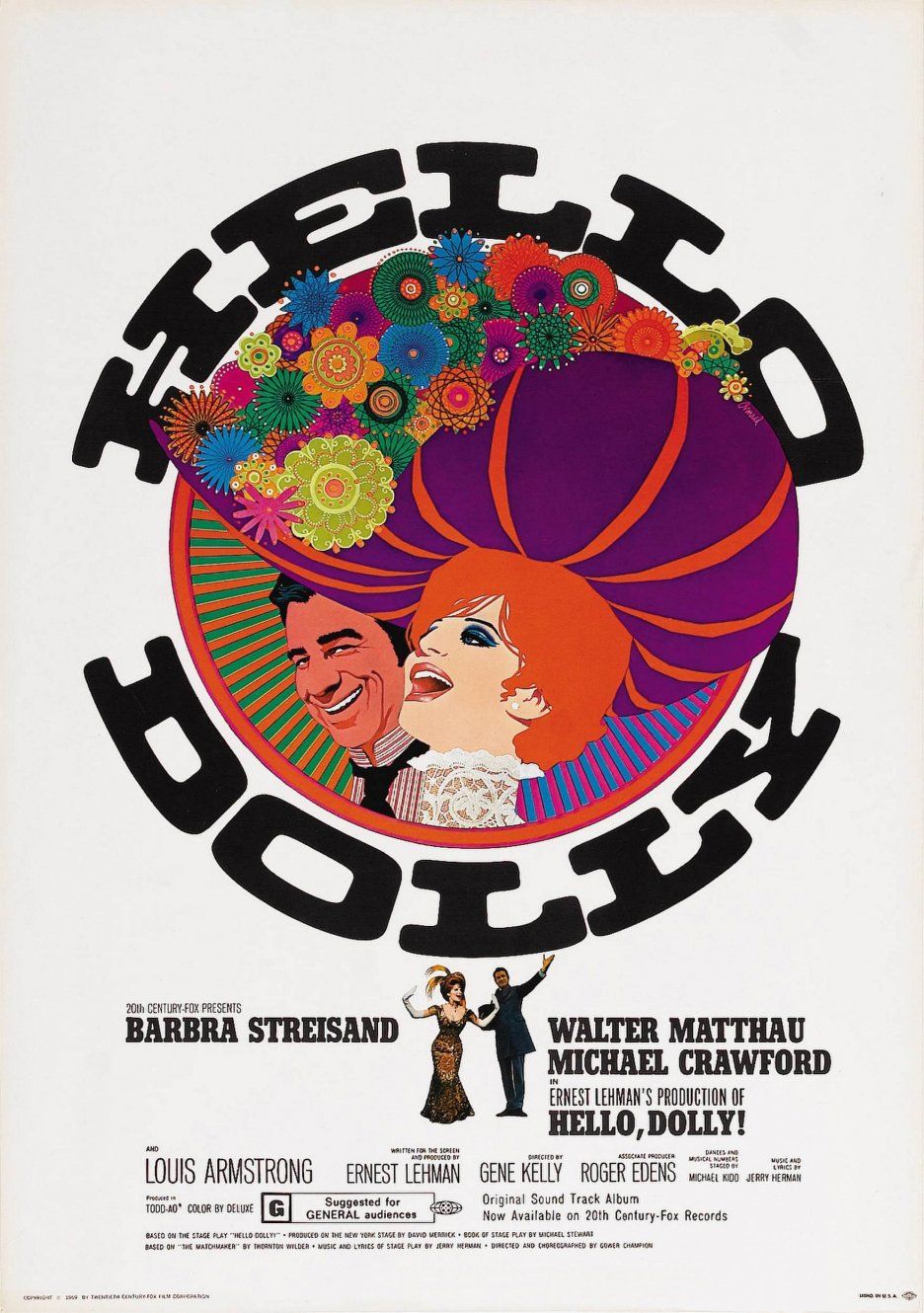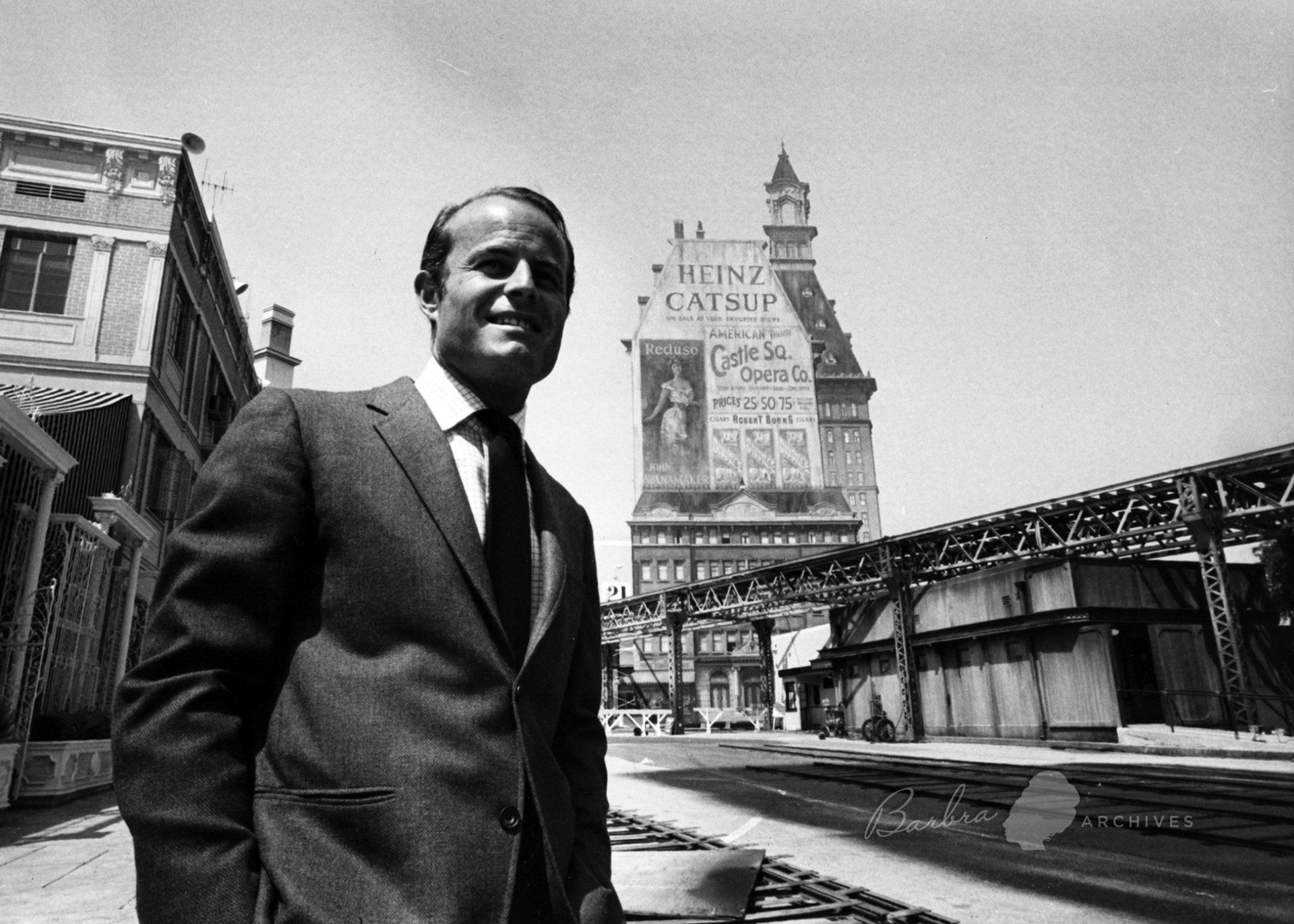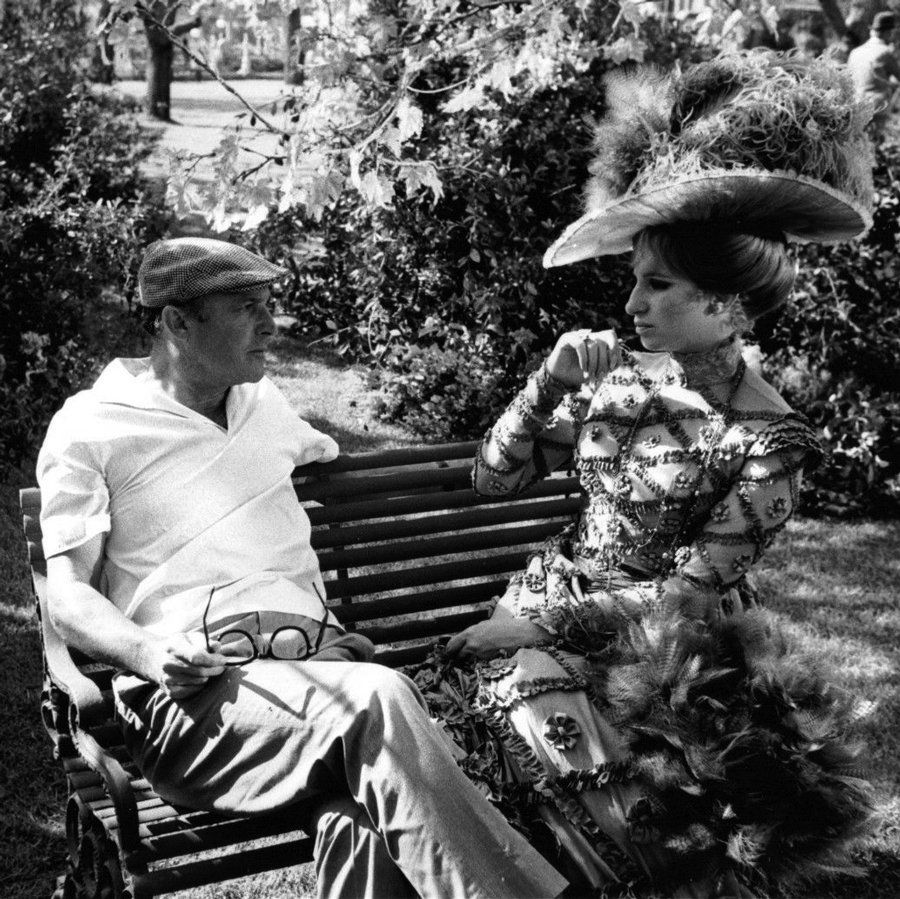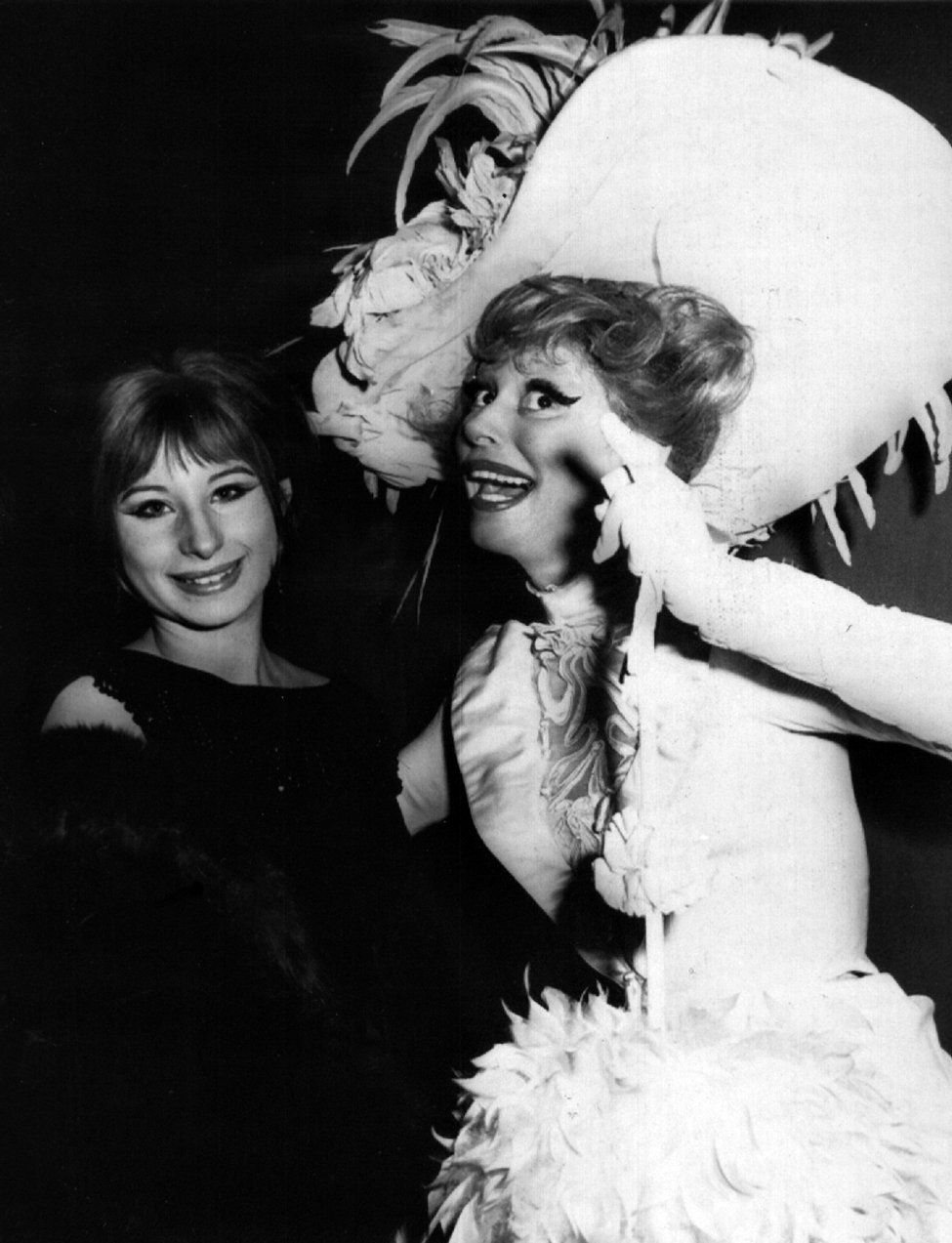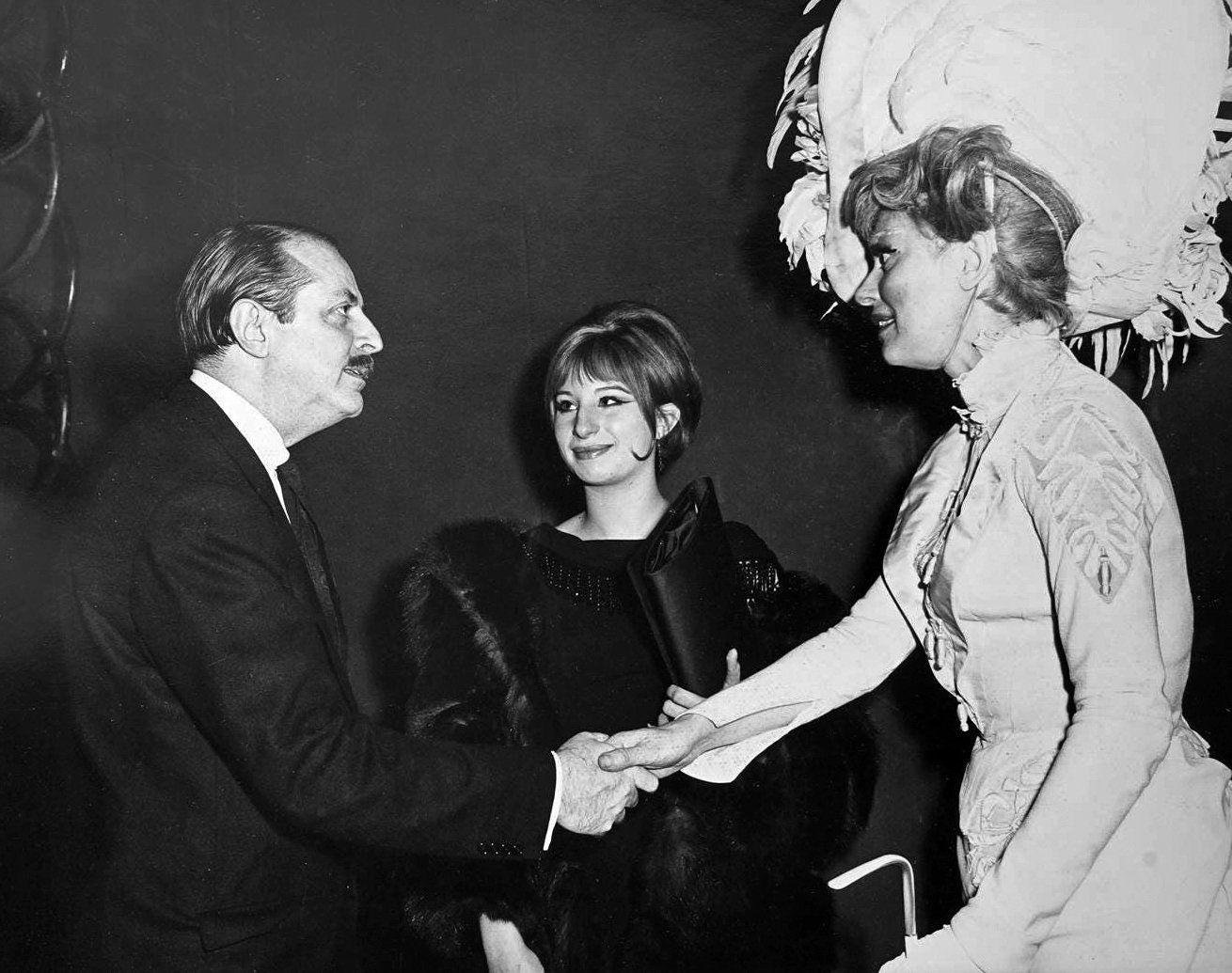In 1964, Barbra Streisand was photographed with producer David Merrick, who was shaking hands with Carol Channing dressed in her Broadway Dolly costume. Channing would win the Tony Award that year for her performance in the show, beating out Streisand for
Funny Girl. Who knew then that Streisand would eventually star in the motion picture version of the musical?
“The movie of
Hello Dolly can’t be made for five years,” Carol Channing told a reporter in 1965, “and then I’m bracing myself for them to sign whoever happens to be the Marilyn Monroe of the moment.” (Monroe was cast in Channing’s part for the 1953 film version of
Gentlemen Prefer Blondes .)
In May 1967, it was announced that Barbra Streisand would portray Dolly in the movie for an amount anywhere from $750,000 to $1 million. In reality, Fox memos reveal that Streisand was paid $335,000 for twenty weeks of work, plus 10% of net profits.
“With all due respect to young Miss Streisand,” Washington Post critic Richard L. Coe wrote, “the mournful Nefertiti is clearly not the outgoing Irish woman whose vitality brightens Thornton Wilder’s mature, life-loving Dolly Gallagher Levi.”
Coe expressed what others were thinking – Streisand was too young for the role, and poor Carol Channing was overlooked for the movie.
Channing was a good sport, sending yellow roses to Streisand and a telegram that said, “Barbara [sic] Dear – So happy for you and Dolly! Congratulations and good luck.” (Channing’s agent also shared the telegram with the press.)
“I really wanted to use Carol Channing in the picture,” Lehman admitted. “I mean, who else would you use? But then I saw a rough cut of
Thoroughly Modern Millie .” Channing had a supporting role in the 1967 Julie Andrews film as eccentric widow Muzzy Van Hossmere. “I thought she looked a little grotesque, cartoonish. I felt very guilty because Carol is a lovely woman and she and her husband had been so nice to me and my wife. But I honestly felt I couldn’t take a whole movie in which Carol was in practically every scene. Her personality is just too much for the cameras to contain.”
What’s unfortunate is that Channing told the press during the filming
Millie that she was basically doing a screen test for Dolly Levi. “I’m so determined that when they make the movie of
Hello, Dolly
they use me I decided that this was the only way to prove that I could do it,” she said.
“Julie [Andrews] felt the same way I did about putting someone else in the movie version of
My Fair Lady ,” Channing continued. “I guess what we have to learn is that a Broadway success doesn’t necessarily mean that people outside of New York know who we are.”
Channing was referencing a long history of Broadway actresses not reprising their leading roles in the movie version of their shows. Andrews was replaced by Audrey Hepburn in
Fair Lady ; Gwen Verdon was replaced by Shirley MacLaine in
Sweet Charity ; Stephanie Mills was replaced by Diana Ross in
The Wiz.
Despite receiving an Oscar nomination for Best Supporting Actress in
Millie, Carol Channing was out of the
Dolly movie.
Viewing Lehman's list of casting options is interesting! For Dolly, Lehman considered Julie Andrews (probably trying to replicate his hit with her on
Sound of Music ); Elizabeth Taylor (she couldn't really sing); Lucille Ball (see
Mame ); Maureen O'Hara and Carol Burnett. Crossed out on his list was Doris Day, who must have turned him down. Written in as an afterthought were Angela Lansbury and Deborah Kerr.
Lehman's list of Vandergelders is just as interesting: Jimmy Stewart, Rex Harrison, Richard Burton, Jackie Gleason, and Alec Guinness.
For Irene Molloy, Lehman considered Yvette Mimieux, Liza Minnelli, Mary Tyler Moore, Maggie Smith, Sally Ann Howes, Lee Remick, and Jane Fonda (!).
It was director Mike Nichols who suggested Streisand as Dolly. Thornton Wilder himself described Dolly Levi in his play as “uncertain age; mass of sandy hair; impoverished elegance.” Streisand was hired as Dolly when she was 24 years old. She filmed the movie when she was 25 years old (note:
Funny Girl had NOT been released, nor had her performance in it been lauded yet);
Dolly was released when
Barbra was 27.
“Barbra is a warm, appealing personality,” Lehman explained, “and I believe she will be enormously sympathetic as a manipulator of the lives of other people.”
Shortly after her casting was announced, Streisand was upbeat about the role when she told columnist Charles Champlin that
Hello, Dolly! was “not just a filming of the stage version. That's not the way it was presented to me and I wouldn't have done it. I wouldn't have done it on stage, wouldn't have wanted to. It wouldn't have been right for me. But this movie as I get it is going back closer to the original.”
Streisand went to see Pearl Bailey play Dolly on Broadway in January 1968. Columnist Dorothy Manners reported that Bailey invited Barbra to join her onstage where they sang “Hello, Dolly” a couple of times. “I haven’t learned the lyrics yet,” Barbra said. Pearl Bailey, headlining an all-black cast of the musical, told Barbra, “Honey, don’t worry that you aren’t a blonde Dolly like Carol Channing, Betty Grable, Ginger Rogers. I’m a brunette, too.”
And Norma Lee Browning reported in her September 1967 column that Streisand hopped over to Las Vegas to see the double bill of Dorothy Lamour and Ginger Rogers playing Dolly at the Riviera Hotel.
“I thought I was too young for the role,” Streisand confessed in 2018. “I thought they should have used an older woman. And I talked to Marty [her manager] and said, ‘Can’t I get out of this?’ I don’t even understand the pairing of me and Walter Matthau. You know, it’s not romantic. Nobody’s going to root for us to be together.”

